World3 Again
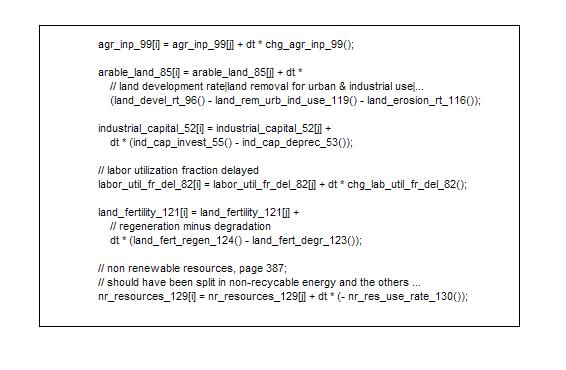
File: c:/ddc/Angel/BestIntentions/World3Again.html Date: Wed Mar 16 22:14:54 2011 (C) OntoOO/ Dennis de Champeaux

There are multiple reasons why their warnings have been ignored. Making predictions around 1970 about possible global events 60+ years later is a stretch. Science and technology have produced so many breakthroughs in the previous centuries - yielding so much more control by humanity against the challenges of Nature - that the World3 scenarios were simply dismissed and subsequently forgotten.
Ironically, we suspect that the Dennis Meadows's team contributed with their three books to the dismissal of their predictions. They outlined in all their publications sequences of interventions that would avert the troubles of their standard scenario. Since they showed a possible way out, it was realistic to assume that the full power of the world community would be able to keep things under control.
Their 2004 publication announced a last update in 2012. There will be none. Dennis Meadows does not believe anymore that realistic interventions are possible - apparently assuming the veracity of the World3 model.
The scenarios described in [Meadows2004] aimed at avoiding a collapse
rely on both types of interventions.
We doubt whether the technology advances they assume since 2002
are feasible:
- 4% reduction per year in the generation of persistent pollution
- 4% increase per year of agricultural yield
- 4% reduction per year of the use of non-renewable resources
Hence, we ran our own sequence of interventions.
There are about 150 secondary parameters that depend on the primary parameters. The secondary parameters determine in turn the changes of the primary parameters in a fine-grained iteration loop. About one-third of the secondary parameters represent relationships that are based on empirical data (obtained by a team of at least 17 members). The model was validated and tuned on the period of 1900-1970. Only minor adjustments were required for their 1992 publication "Beyond the Limits". No adjustments - as far as we know - were necessary for their 2004 publication.
Here two examples of causal connections:
-- Industrial output per capita determines a crowding multiplier. The
latter together with the fraction of the population that is urban
determines a life expectancy multiplier. This one in turn - together
with a few others - sets the life expectancy, which impacts mortality,
which determines the population, which ...
-- Industrial output per capita determines a multiplier regarding the
usage of non-renewable natural resources. The latter - together with
a few others, among which population - determines the persistent
pollution generation rate. This one in turn, with a delay, sets the
land fertility degradation rate, which impacts land yield, etc.
Dennis Meadows believes that the model is still valid (personal communication). We couldn't find anything, after extensive analysis of the documentation, the code and common sense that counters his belief.
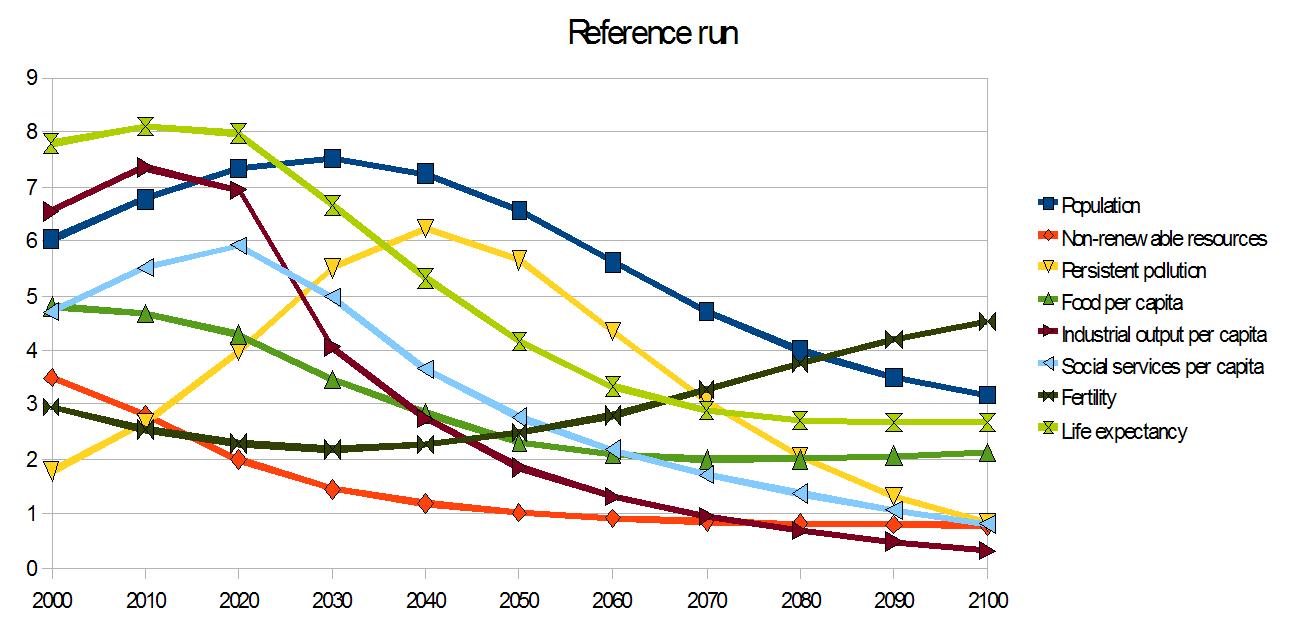
Notes:
The population peaks in 2030.
Life expectancy peaks in 2010.
Non-renewable natural resource fraction goes down steadily
Persistent pollution peaks in 2060.
Industrial output per capita peaks in 2010.
Food per capita decreases steadily - collective starvation
after 2050.
Social services per capita peaks in 2020.
Fertility reaches 2.1 in 2028-9 (!) but too late.
Disclaimer
The authors of the World3 model warn repeatedly that the model is not
accurate enough to generate actual dates; they only claim that the
qualitative behavior is to be considered. In addition, the model has
multiple parameters to modify assumptions and to explore the
consequences of interventions.
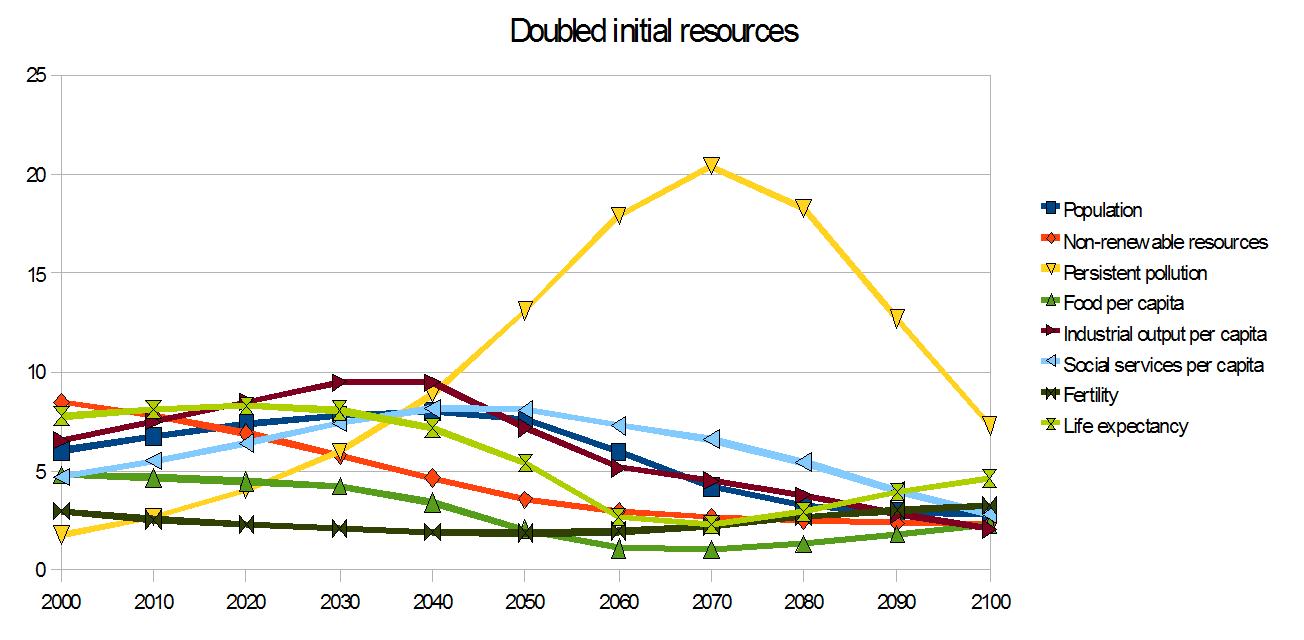
Notes:
Peak population is postponed 10 years.
Persistent pollution goes up dramatically.
Life expectation peaks in 2020 (instead of 2010) but goes down anyway
due to decreasing food.
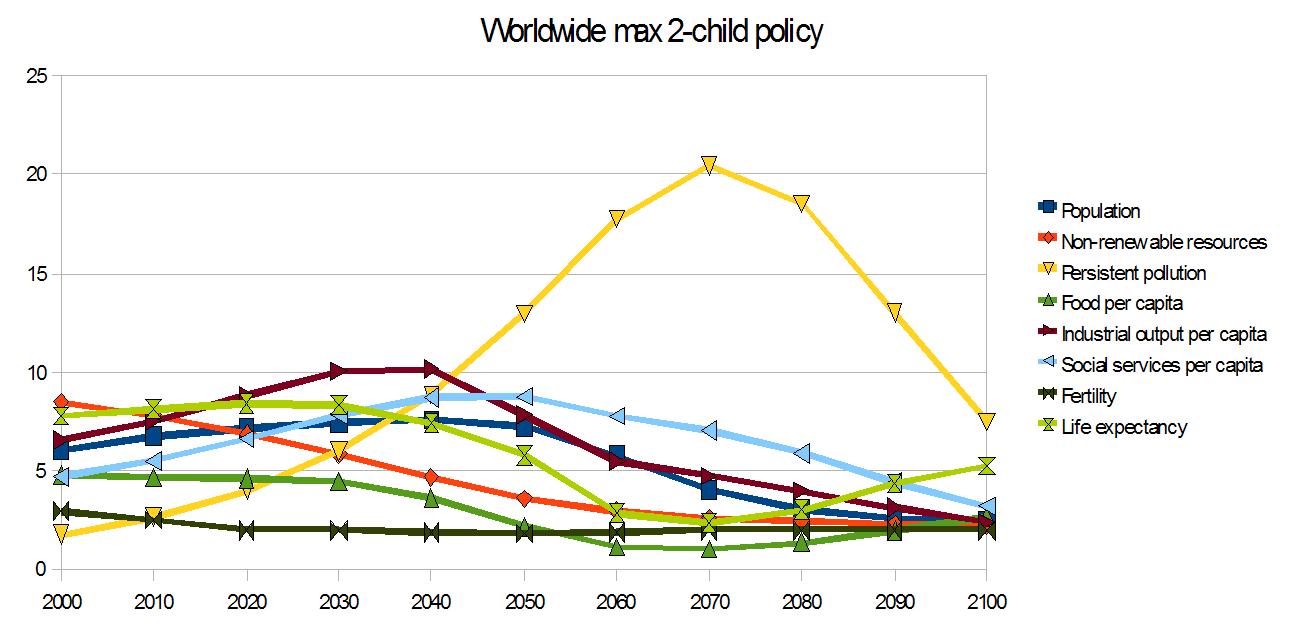
Notes:
The graph does not show changes, but the underlying numbers show
differences. Peak population in 2040 goes down from 8B to 7.6B.
Famine is postponed for about a decade. Life expectancy decreases
slower.
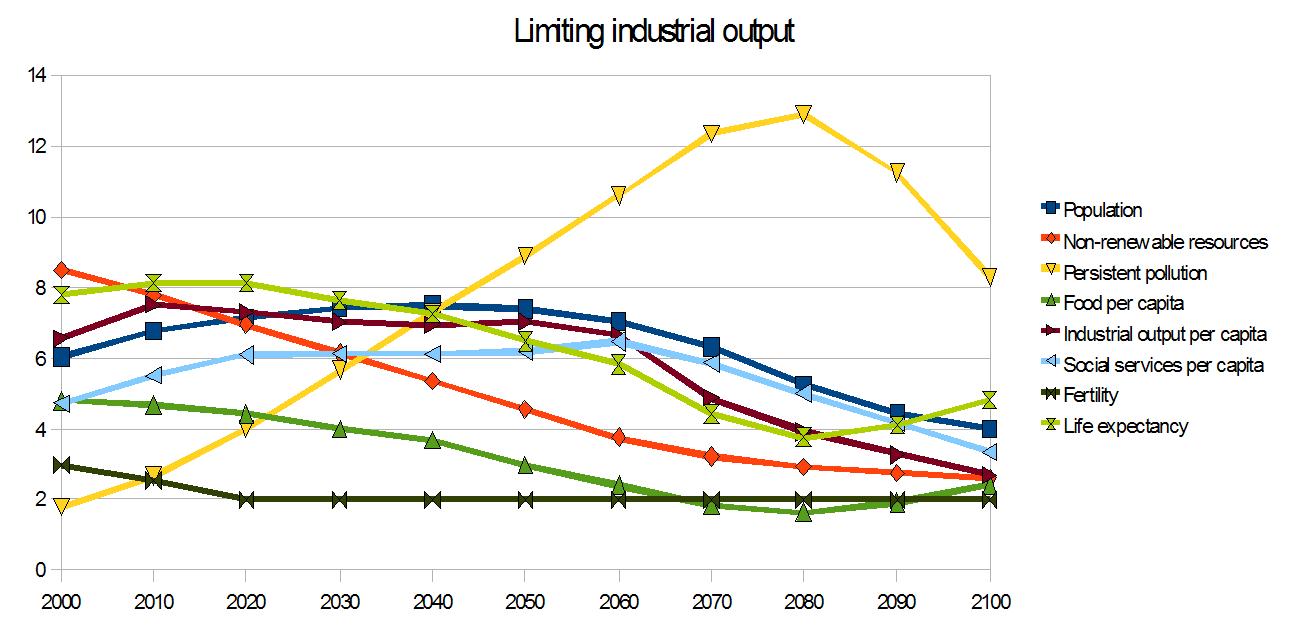
Notes:
Industrial output does not increase any longer. Pollution is
decreasing substantially. Still, even this very strong limitation on
global economic activities is not sufficient to avoid a collapse; life
expectancy decreases steadily and a massive famine hits after 2060.
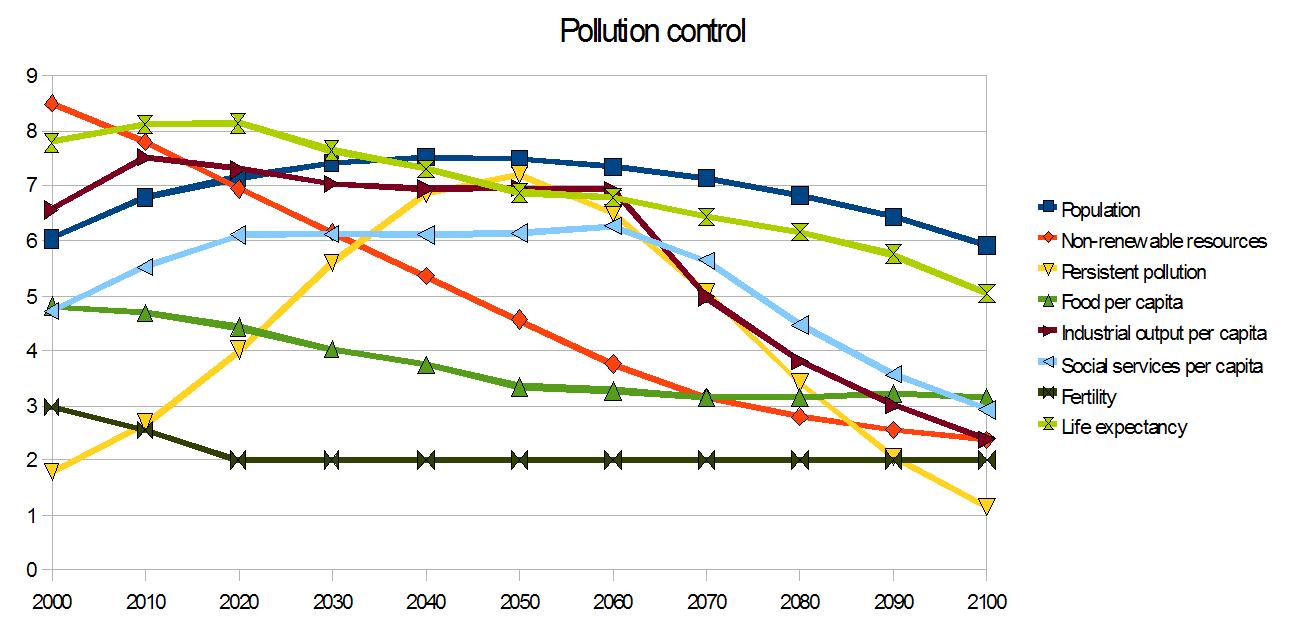
Notes:
It is an act of faith that pollution can be controlled as shown.
Famine is avoided. Still life expectancy goes down after 2020.
The larger population in 2100 has eroded the natural resources
further.
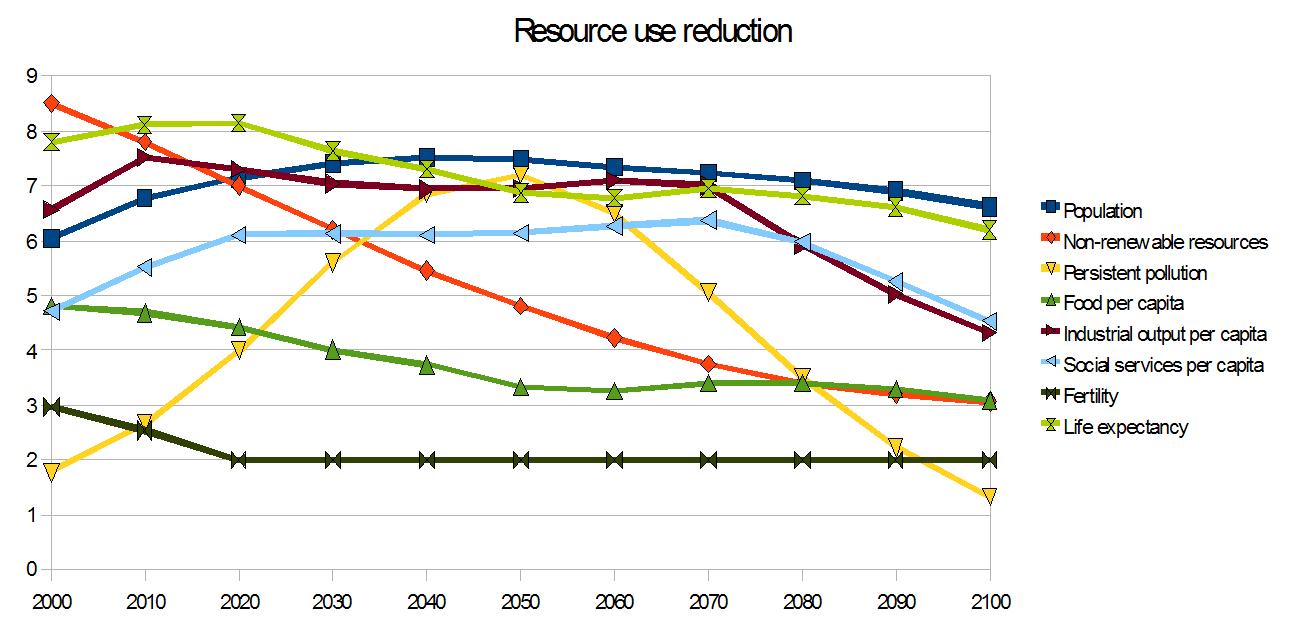
Notes:
We have at this point:
- Assumed doubling of initial non-renewable natural resources
- Global 2-child policy after 2010
- Restriction of industrial production at the 2011 level
- Assumed pollution control improves after 2010
- Assumed reduction of the non-renewable resources consumption rate
after 2010
Even with all these hypothetical technology interventions, we still
observe the model's prediction of a painful increasing mortality,
caused by decreasing food/per capita.
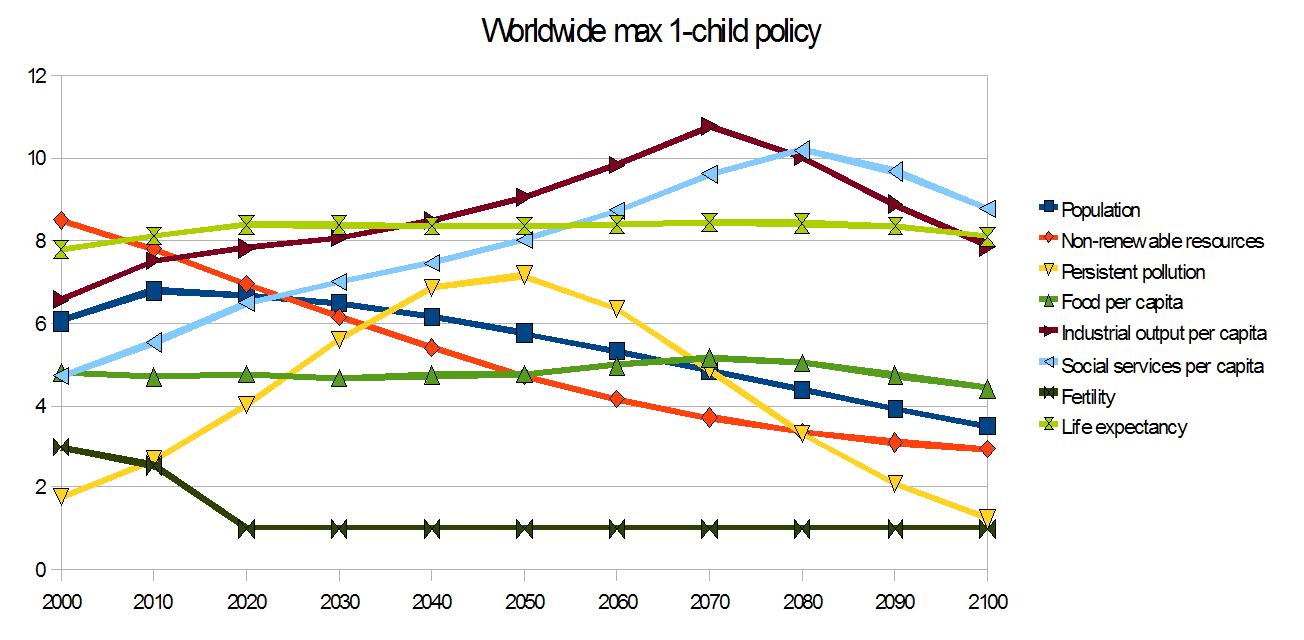
Only with this final exceptional intervention - in addition to the earlier questionable interventions - does the model predict maintaining life expectancy, a main achievement of the 20th century by keeping food/per capita stable. The price is a decreasing world population; not by famines but due to 'voluntary' fertility control.
The model is too optimistic in that it ignores local differences, wars, local/global conflicts, climate change, structural unemployment and - perhaps most importantly - it ignores how humanity in the 22nd century and beyond is supposed to survive on a ravaged, plundered planet.
The World3 model has been attacked - not based on its architecture and not based on its causal mechanisms - but regarding its findings. Extensive analysis of the World3 model has not revealed a flaw. The attacks appear to be irrational denials fueled by faulty analogy reasoning and by excessive optimism: the collapse scenarios should not happen therefore they cannot happen.
Humanity has been described as climbing a resource consumption ladder and breaking off lower rungs. It is just faith that higher rungs exist that can carry an imprudent, humanity.
Sure, we have shown also a sequence of interventions that avoid a catastrophic collapse. However, we want to be the first to admit that these interventions are quite implausible to pull off in our geo-political constellation - while options are shrinking with delays.
The chapter What If addresses briefly how things may actually get out of hand.
[Meadows2004] Meadows, D., J. Randers, & D. Meadows, "Limits to Growth, The 30-Year Update", Chelsea Green Publishing Co., ISBN 1-931498-58-X, 2004.